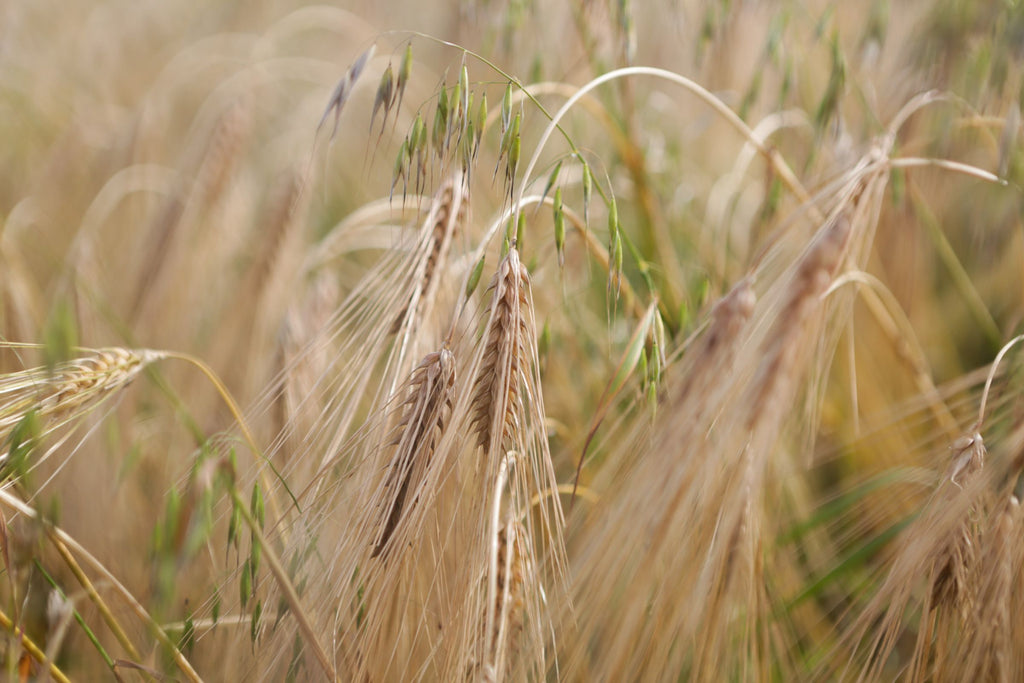
It's been a dreich summer here in the Hebrides, with significantly less sunshine and a lot more of the wrong kind of downpour than usual. Thankfully the heritage bere barley, growing on the nearby machair and destined for our upcoming Nunton whisky, is perfectly adapted to our island conditions, which is why it's been grown here in Uist for many hundreds of years.
Known as a landrace (a variety of a domesticated animal or plant species that has developed over time through adaptation to its natural environment), bere barley has adapted over hundreds of generations to the high pH machair soil of Orkney, Shetland, Caithness, and the Outer Hebrides. With six rows of grain rather than the more common two, bere's heavy heads ripen faster than any other barley variety, an adaptation to the long days and short growing season that we are working with in the north west of Scotland.

Grown since neolithic times, bere was once Scotland's primary barley, which means it was likely the first to the party that is whisky distillation. Indeed, the bard of all things scotch himself can be found singing the praises of ‘the juice Scotch bear can mak us’ in his 1785 poem, Scotch Drink
Once grown throughout Scotland for milling, malting, thatching and animal bedding, bere fell out of favour as newer, higher-yielding cultivars that were easier to work with were developed. However, despite the huge amount of time and money spent on developing these new, ‘superior’ grains, they never performed as well as bere out here in the Hebrides, and crofters have continued to grow bere barley on the Uist machair right up to the current day.

Over the last century the primary use for bere barley in the north west of Scotland has been for animal fodder, but in recent years a growing number of Scotland’s distillers and brewers have embraced bere not just for its exceptional flavour but as part of a rapidly developing appreciation for small batch, heritage produce that showcases the unique terroir of the regions.
Appreciation of bere barley isn’t just about taste though, it is also about sustainability and working with rather than against our environment. Bere is resilient, having adapted perfectly to our conditions here in the Hebrides, and while more modern cultivars may perform better in a ‘ideal’ growing season of low rain and plenty of sun, in the years when the weather is less than perfect, bere really reminds us that it has evolved with and for our climate.

In working to establish a supply chain for bere barley we are working to support local crofters here on the islands. Crofting is an industry that's hard to make a living from, and one that has suffered from the depopulation of the islands in recent years. But using traditional methods like seaweed fertilisation and winter grazing, tcrofting is not only sustainable but regenerative, improving the soil health with each generation of cultivation.
As a B Corp certified distillery, these things are more than important to us, they are integral to our business model, and while our whisky will undoubtedly be rich in island flavour, it will also be part of a rich tapestry of the past, present, and future of island life.

